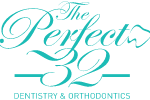

Dentures
Dentures are made to cover the entire or partial arch and employed in patients who have lost their teeth either in the maxillary arch or mandibular arch or even both and employed in patients who have lost all their teeth either in the maxillary arch or mandibular arch or even both.
Types of dentures
- Complete Denture
Fixed / Removable denture. - Partial Denture
Fixed / Removable denture.
Complete Denture
These dentures are made to cover the entire arch in maxillary or mandibular or both to replace the missing teeth. Complete dentures in lower jaw are difficult to manage than the upper jaw as they tend to get displaced easily due to the absence of suction.
An overdenture is a slight modification of complete denture in which a few teeth remain which are shortened and the denture fits over it (and hence the name Overdenture). An overdenture has a few advantages like:
- The remaining natural teeth preserve the bone.
- The natural teeth also share some of the bite force during biting.
- The stability of the denture is improved.
Partial Dentures
Partial dentures cover a few missing teeth but not the entire jaw. They are of two types: Fixed and Removable.
Removable Partial Denture
As the name suggests, these are the partial dentures which can be removed and snapped back as and when desired. They consist of metal framework along with artificial teeth and metal clasps which hold the denture in position.
Two materials are used
- Acrylic resin (rigid/hard)
- Thermoplastic nylon (flexible)
Fixed Partial Denture
Fixed Partial dentures often referred as “Bridges” are cemented in the appropriate position. Bridges are preferred over removal partial dentures as they are comfortable and better resemble natural teeth but they require healthy teeth for their support and are expensive.

